Key Takeaways:
- Options are mainly used for hedging and trading price movements. Although most types of options are complex, UpDown Options’ capped ceiling and floor can help traders mitigate some risks.
- UpDown Option positions automatically close if the underlying asset price touches a predetermined ceiling or floor price.
- The potential benefits of trading UpDown Options include built-in protection via clearly stated floor and ceiling prices, automatically taking profit and potentially limiting losses, gaining full price exposure to an asset at a fraction of its price, and facilitating hedging for specific needs.
- However, UpDown Options can potentially limit one’s profits as well. Additionally, for traders who want to keep their position open for a longer time, there is the risk of positions being closed out early in volatile markets.
What Are Options?
Options are a type of derivative contract agreement that gives the holder the right (i.e., the option), but not the obligation, to buy or sell a specific underlying asset at a set price (referred to as the strike price) up until a set future date (also known as the expiry date). The underlying asset could be a cryptocurrency (BTC, ETH, CRO, etc.) or other assets like stocks, bonds, commodities, and currencies. Options are typically used for hedging and trading price movements.
Options allow users to go short (i.e., profiting even when prices go down) and use leverage to gain a large exposure with a small capital outlay. They are also used for hedging and forecasting price movements.
Hedging, in crypto trading, is to open an offsetting position of an asset that reduces the price risk of an existing position. In other words, it is made to reduce the risk of adverse price movements of another crypto asset. Normally, to hedge, a trader will take the opposite position of a related asset or type of token based on the asset to be hedged.
Read more about what derivatives, options, and futures are.
What Are UpDown Options?
A UpDown Option is a special type of option that automatically terminates if the underlying asset’s price hits a predetermined ceiling or floor (up or down) price. These prices are also sometimes referred to as the barrier price.
This is not to be confused with the strike price, which is the price at which the option holder buys or sells the asset if they exercise their right to do so. With UpDown Options, there’s the potential to limit both profits and losses because of the Target and Stop prices, which we look at below.
UpDown Options have built-in protection on both the upside and downside.
- When buying an option, the ceiling price is the level that automatically takes profit (i.e., the Target). This potentially helps prevent a trader from holding onto a trade for too long and risking the trend reversing. The floor price is the level that prevents a trader from incurring additional losses (i.e., the Stop).
- When selling an option, the reverse is applicable. The ceiling price limits potential losses (i.e., the Stop), while the floor price represents the maximum profit potential (i.e., the Target).
How Do UpDown Options Work?

Traders can choose to buy or sell an UpDown Option depending on which direction they believe the market will go.
- If they think an asset’s price will increase, they can buy an option to open a long position.
- If they think the asset’s price will decrease, they can sell an option to open a short position.
In either case, the value of the option is the difference between the Target and Stop prices. The trader’s maximum loss is the cost they put into the trade. This amount will be the difference between the current price and the Stop level. For example, assume an underlying asset has a current indicative price of $20,000, and the trader would like to take a long position on an option with a floor of $19,900 and ceiling of $20,400.
Thus, the value of this option is $500 (ceiling price minus floor price). This is known up front, along with the maximum profit and loss, when the trader selects the number of options before entering into a trade. As mentioned above, the maximum loss is the cost* they put into the trade. In this example, the maximum loss is $100 (current indicative price minus floor price), which is the total cost* to enter the position; the maximum profit is $400 (ceiling price minus current indicative price).
Here Is What Happens When Traders Open an UpDown Position
Once the trader has opened a position, there are three possible outcomes. Let’s imagine they bought an UpDown Option, believing the asset’s price will rise. These are three possible scenarios that can occur after that:
- The option expires without hitting the Target or Stop price. If the price at expiry is higher than when the position was opened, the trader receives a payout. If the price at expiry is lower, they’ll take a loss on the trade instead. The amount will depend on how much the market moved, but it will always be in between the maximum possible profit and loss.
- The position is closed:
- The indicative price hits the Target price. The position is closed and the option expires immediately. The trader then receives the maximum payout, as outlined before the trade was placed.
- The indicative price hits the Stop price. The position is closed and the option expires immediately. The trader takes a loss, as outlined before the trade was placed.
- The position is proactively closed before the option expires. If the price at closing is higher than when the position was entered into, the trader receives a payout. If the price at closing is lower, they take a loss on the trade. The amount will depend on how much the market moved, but it will always be in between the maximum possible profit and loss.
*Note that the maximum payout/loss and examples above do not include the fees that traders need to pay.
Benefits of UpDown Options
Built-in protection.
As previously described, traders will always know their maximum profit and loss up front with the clearly stated barrier prices. This potentially limits losses, as the option automatically terminates when the Stop price is met. It can also potentially help prevent a trader from holding onto a trade for too long and risking the trend reversing by automatically taking profit when the Target price is met.
Hedging risk by taking a short position.
A major benefit of options is that they allow traders to hedge risk. This is done by opening a position that’s in the opposite direction of their existing positions. If a trader holds an underlying digital asset in their portfolio and believes its price will drop, they can hedge by taking a short position with UpDown Options. This can enable a trader to offset potential losses they might incur from holding that particular digital asset. There’s no need for them to sell the underlying digital asset.
Furthermore, with UpDown Options, exposures will be hedged to specific prices since the barrier price serves as a trigger for when the option, and hence the hedge, would be terminated. This could also be useful for traders who only need the hedge for price movements within a certain range.
Full price exposure at a low cost.
UpDown Options enable trading of the underlying asset’s price movements at a fraction of the cost of owning it while allowing traders to take advantage of the digital asset’s full price movement. For example, let’s say BTC is trading at $20,000: If a trader purchases one UpDown Option for $100, and BTC’s price increases by $200, the trader will realise a net profit of $200 on their position (not inclusive of fees); however, if the user buys $100 worth of BTC itself, and BTC’s price increases by $200, the user will only gain $1, a fraction of the price increase.
Drawbacks of UpDown Options
Potentially limited profits.
As previously described, an UpDown Option can potentially limit one’s profits, as it is automatically closed when the barrier price is met. However, this could be beneficial in certain cases because it enables automatic profit-taking and also limits losses.
Vulnerability in volatile markets.
In choppy markets where an asset price is fluctuating sharply, it’s easier for positions to automatically close. This would not be ideal for a trader who wanted to keep their position open for a longer time.
Conclusion — Should Users Trade UpDown Options?
UpDown Options are a type of option that automatically terminates if the underlying asset price touches a predetermined Target or Stop price. Their benefits include potentially limiting losses, a full exposure to asset price movements at a fraction of the asset’s cost, and enabling hedging for specific needs.
However, UpDown Options also have their drawbacks, including potentially limiting profits and the risk of being easily terminated in volatile markets.
Trade UpDown Options in the Crypto.com App
With Crypto.com | Derivatives North America offering the first derivative product with the Crypto.com App, US users have the ability to buy or sell UpDown Options for BTC and ETH, depending on which way they think the market will move. Users can purchase an option to open a long position if they believe that a digital asset’s price will rise, or sell an option to open a short position if they believe that a digital asset’s price will fall.
Each week, users can choose from four UpDown Options with different barrier prices listed for BTC and ETH. They can have a total of 10 open positions for each digital asset at any one time. This includes both long and short positions. If the Target or Stop price is hit at any time during the week, the contract is automatically closed and a new one will be created at a different level, providing users with continuous trading opportunities.
Step into the world of derivatives trading with UpDown Options. Participate in the price movement of BTC and ETH at a fraction of the asset’s cost, with built-in protection for every trade.
Due Diligence and Do Your Own Research
All examples listed in this article are for informational purposes only. You should not construe any such information or other material as legal, tax, investment, financial, or other advice. Nothing contained herein shall constitute a solicitation, recommendation, endorsement, or offer by Crypto.com to invest, buy, or sell any coins, tokens, or other crypto assets. Returns on the buying and selling of crypto assets may be subject to tax, including capital gains tax, in your jurisdiction. Any descriptions of Crypto.com products or features are merely for illustrative purposes and do not constitute an endorsement, invitation, or solicitation.
The availability of the products described herein is subject to jurisdictional limits, and only available to US users of the Crypto.com App. Foris DAX Inc. and Foris Inc. (d/b/a Crypto.com) offer connectivity to Crypto.com | Derivatives North America, which is regulated by the Commodity Futures Trading Commission, for the purpose of trading derivatives on and subject to the rules of Crypto.com | Derivatives North America.
Past performance is not a guarantee or predictor of future performance. The value of crypto assets can increase or decrease, and you could lose all or a substantial amount of your purchase price. When assessing a crypto asset, it’s essential for you to do your research and due diligence to make the best possible judgement, as any purchases shall be your sole responsibility.





